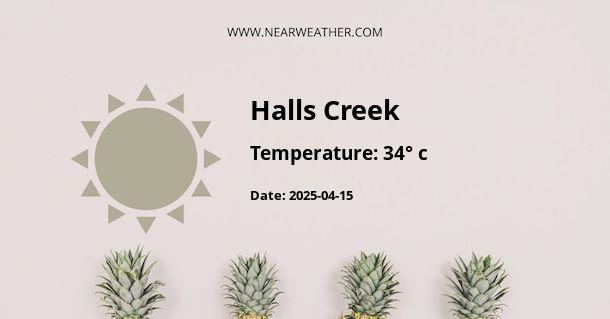Halls Creek, Australia: Climate and Weather
Halls Creek is a small town located in the Kimberley region of Western Australia. It is known for its unique climate and diverse weather patterns throughout the year. In this article, we will explore the different seasons in Halls Creek, the average temperatures, rainfall, and other important weather-related information.
Seasonal Overview
Halls Creek experiences two distinct seasons: the wet season and the dry season. The wet season typically occurs from November to April, while the dry season extends from May to October.
During the wet season, Halls Creek receives the majority of its rainfall. This period is characterized by heavy afternoon thunderstorms and high humidity levels. The landscape becomes lush and green, and many waterfalls and rivers in the surrounding areas come to life. However, it is important to note that some roads and access points may become temporarily inaccessible due to flooding during this period.
The dry season in Halls Creek is known for its warm and sunny weather. The temperatures are more moderate, and the humidity levels drop significantly. This is the ideal time for outdoor activities such as camping, hiking, and exploring the region's natural beauty.
Average Temperatures
Let's take a closer look at the average temperatures in Halls Creek throughout the year:
| Month | Max Temperature (°C) | Min Temperature (°C) |
|---|---|---|
| January | 37 | 24 |
| February | 37 | 24 |
| March | 36 | 23 |
| April | 34 | 20 |
| May | 31 | 15 |
| June | 28 | 11 |
| July | 28 | 10 |
| August | 31 | 13 |
| September | 35 | 18 |
| October | 37 | 22 |
| November | 37 | 24 |
| December | 38 | 24 |
As seen from the table, Halls Creek experiences hot temperatures during the summer months of January to March, with average maximum temperatures ranging from 36°C to 38°C. The winter months of June and July are the coolest, with average maximum temperatures around 28°C. Nights can be cooler, especially in the dry season, with minimum temperatures dropping to around 10°C in July.
Rainfall
Halls Creek receives the majority of its rainfall during the wet season. The average annual rainfall in Halls Creek is approximately 460mm. However, it is important to note that rainfall can vary significantly from year to year, and some years may experience below-average rainfall.
Here is a breakdown of the average monthly rainfall in Halls Creek:
| Month | Rainfall (mm) |
|---|---|
| January | 159 |
| February | 149 |
| March | 82 |
| April | 19 |
| May | 9 |
| June | 4 |
| July | 1 |
| August | 1 |
| September | 4 |
| October | 25 |
| November | 57 |
| December | 76 |
From the table, it is evident that the wet season between November and April receives the highest amount of rainfall, with January and February being the wettest months. The dry season, on the other hand, experiences minimal rainfall, with July and August being the driest months.
Extreme Weather Events
While Halls Creek generally experiences a tropical climate, it is susceptible to extreme weather events such as cyclones and severe thunderstorms during the wet season. These weather events can cause significant damage to infrastructure, disrupt transportation, and pose risks to personal safety.
It is advisable to stay updated with weather forecasts and warnings during the wet season, especially if planning outdoor activities or traveling in the region.
Conclusion
Halls Creek, Australia, offers a unique climate with distinct wet and dry seasons. The wet season brings heavy rainfall, lush landscapes, and high humidity levels, while the dry season offers warm and sunny weather with more moderate temperatures. It is important to consider these weather patterns when planning activities in Halls Creek to ensure a safe and enjoyable experience.
A - Halls Creek's Latitude is -18.266670 & Longitude is 127.766670.
A - Weather in Halls Creek is 34° today.
A - Climate Conditions in Halls Creek shows broken clouds today.
A - Humidity in Halls Creek is 28% today.
A - Wind speed in Halls Creek is 18.4 km/h, flowing at 80° wind direction. today.
